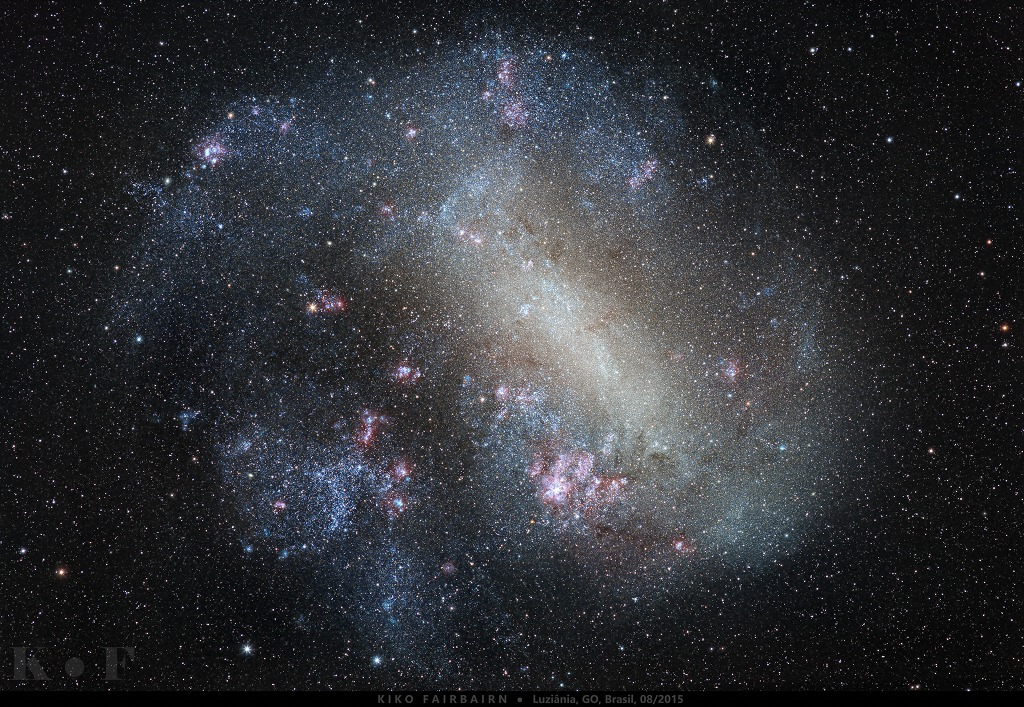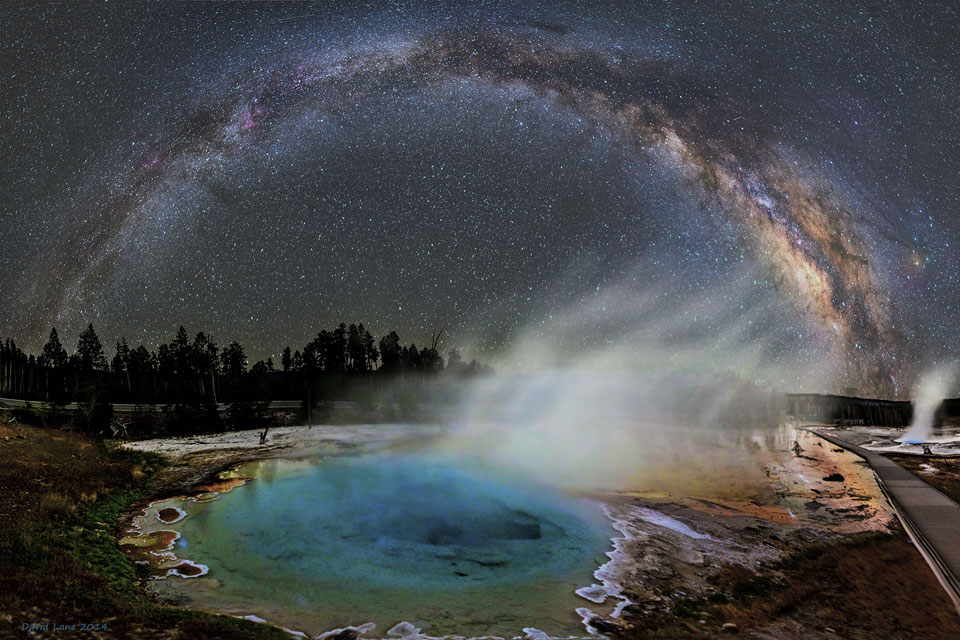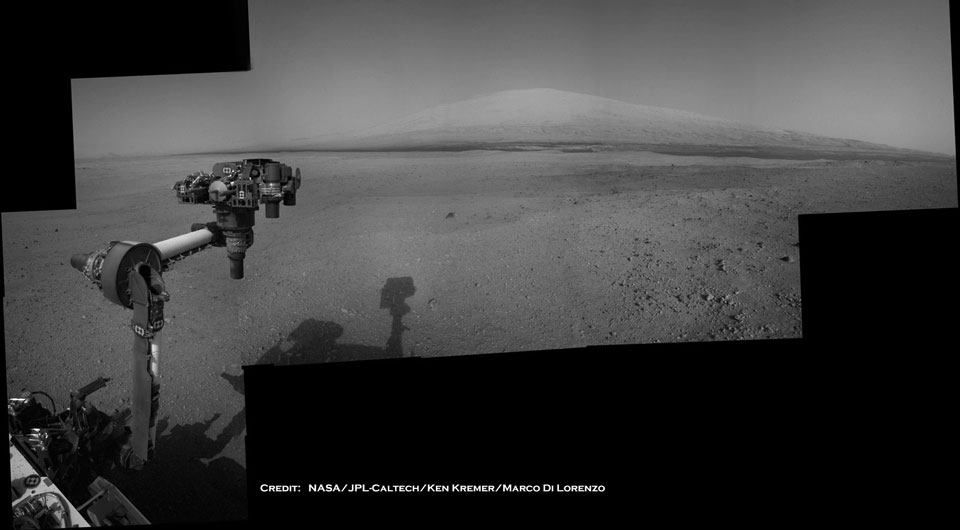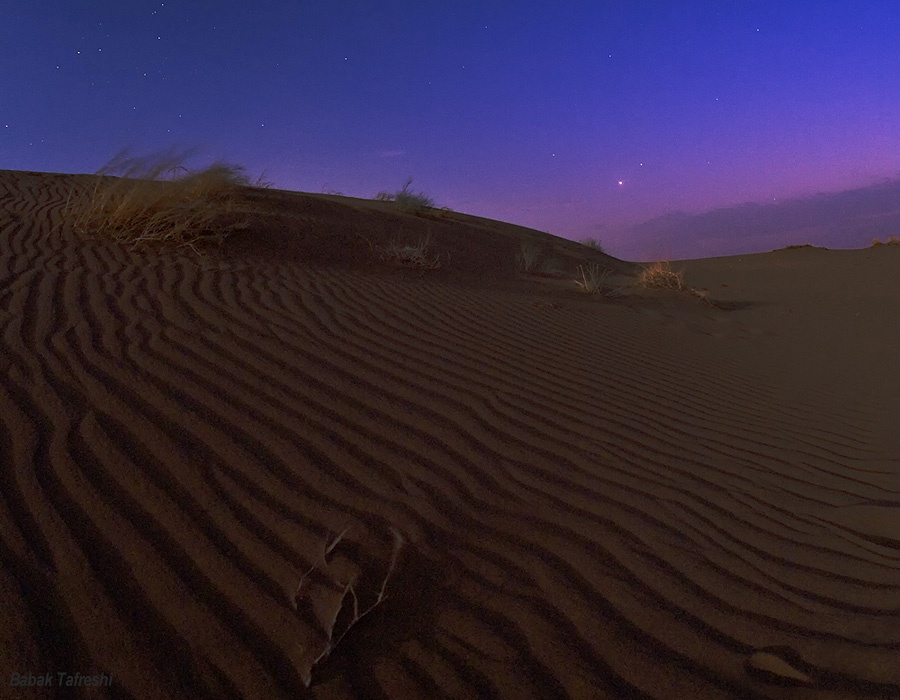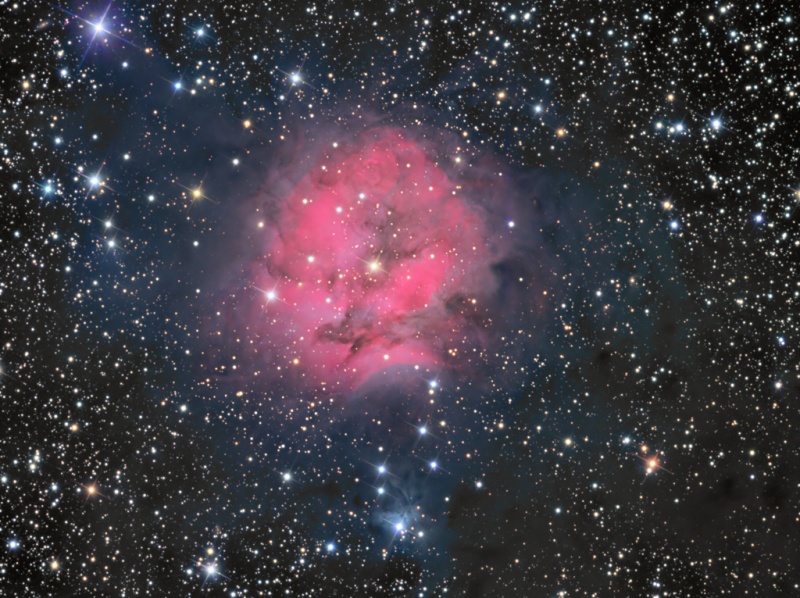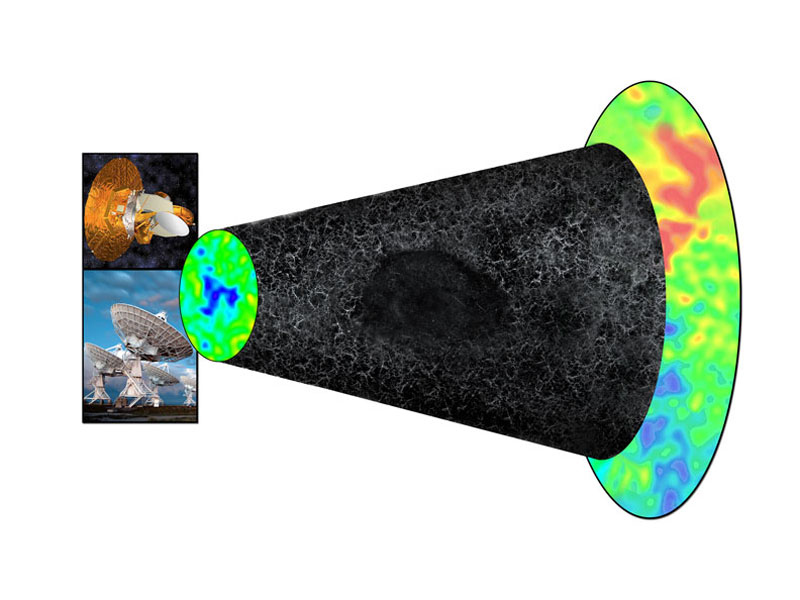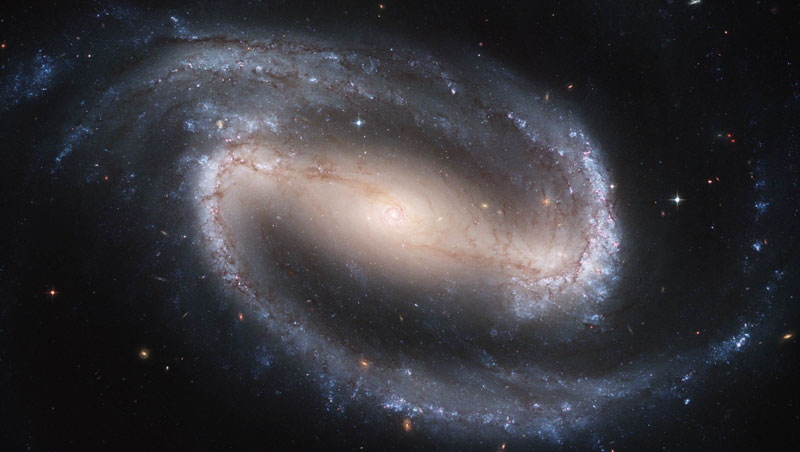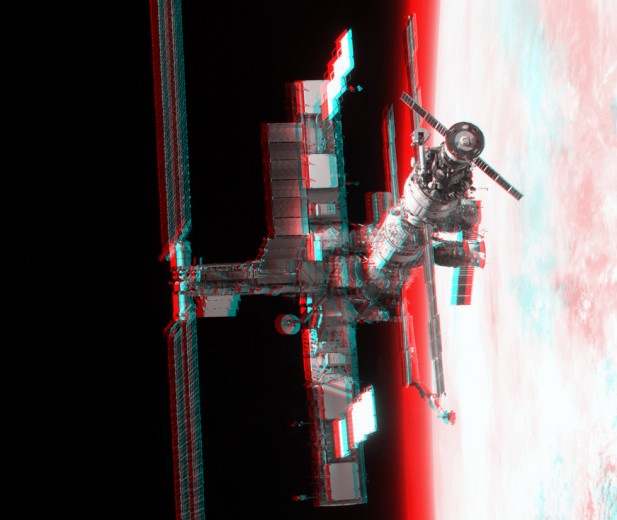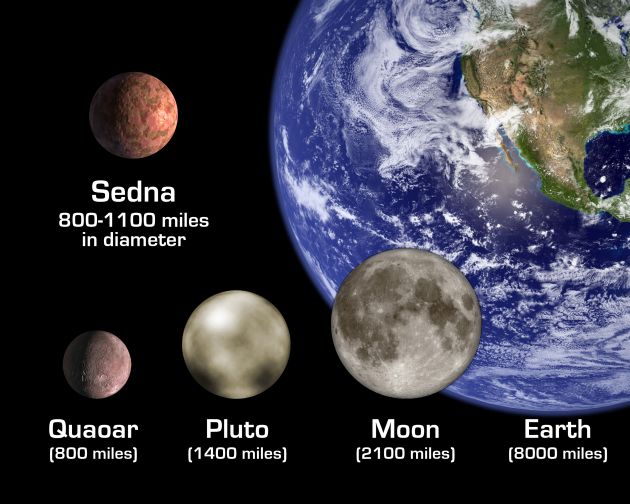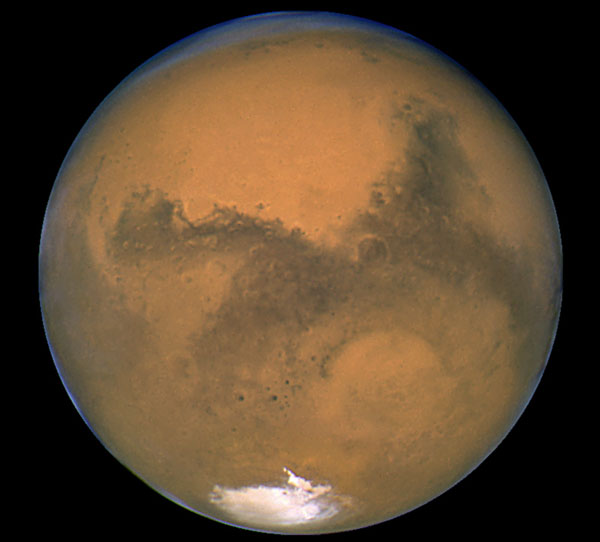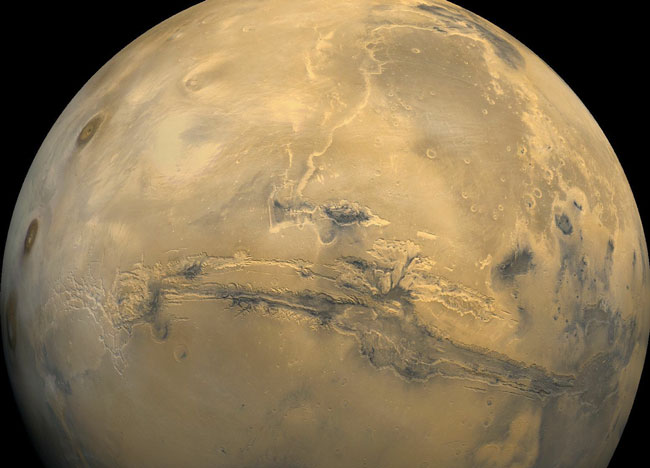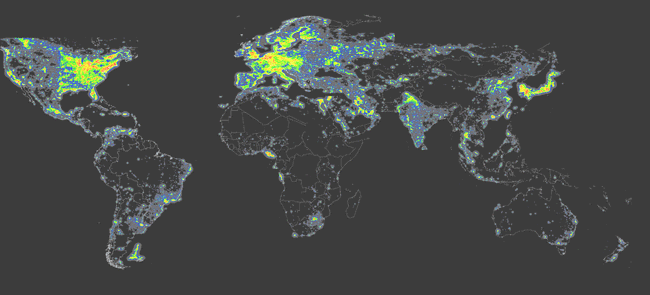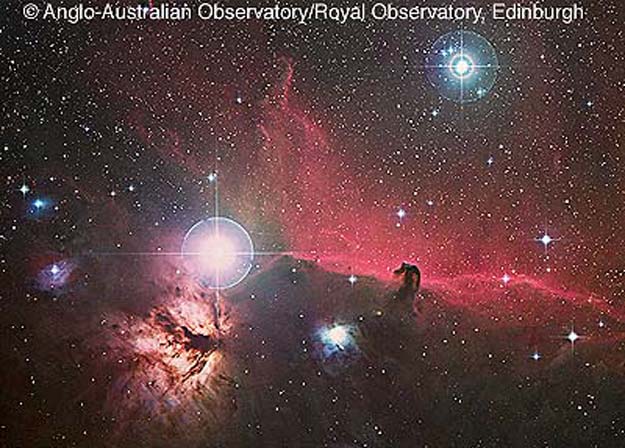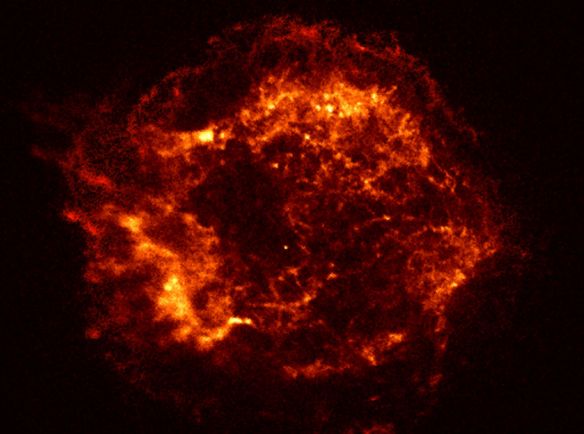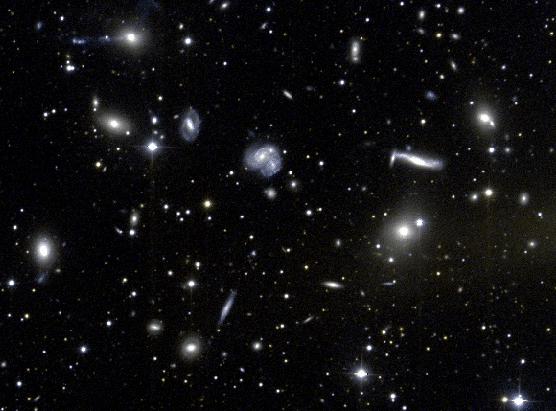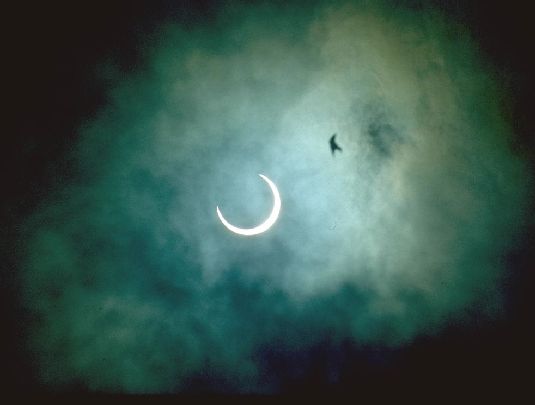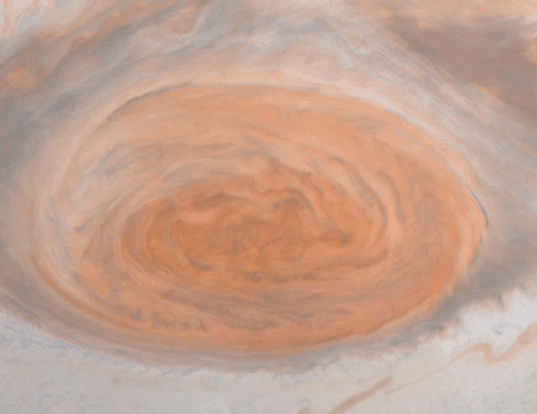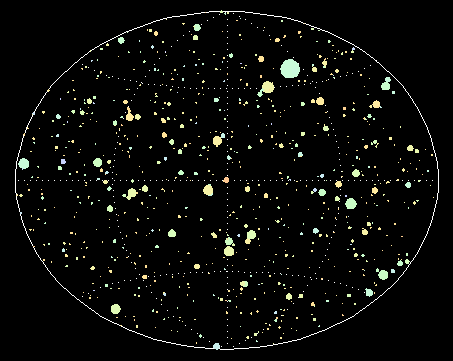| << Previous | Index | Next >> |
2015 The 16th century Portuguese navigator Ferdinand Magellan and his crew had plenty of time to study the southern sky during the first circumnavigation of planet Earth. As a result, two fuzzy cloud-like objects easily visible to southern hemisphere skygazers are known as the Clouds of Magellan, now understood to be satellite galaxies of our much larger, spiral Milky Way galaxy. About 160,000 light-years distant in the constellation Dorado, the Large Magellanic Cloud (LMC) is seen here in a remarkably deep, colorful, image. Spanning about 15,000 light-years or so, it is the most massive of the Milky Way's satellite galaxies and is the home of the closest supernova in modern times, SN 1987A. The prominent patch below center is 30 Doradus, also known as the magnificent Tarantula Nebula, is a giant star-forming region about 1,000 light-years across.
2014 The Milky Way was not created by an evaporating lake. The colorful pool of water, about 10 meters across, is known as Silex Spring and is located in Yellowstone National Park in Wyoming, USA. Illuminated artificially, the colors are caused by layers of bacteria that grow in the hot spring. Steam rises off the spring, heated by a magma chamber deep underneath known as the Yellowstone hotspot. Unrelated and far in the distance, the central band of our Milky Way Galaxy arches high overhead, a band lit by billions of stars. The above picture is a 16-image panorama taken late last month. If the Yellowstone hotspot causes another supervolcanic eruption as it did 640,000 years ago, a large part of North America would be affected.
2013
Click to play embedded YouTube video.
Video Credit: NASA, ESA, F. Summers, Z. Levay, L. Frattare, B. Mobasher, A. Koekemoer and the HUDF Team (STScI)
2012 What's that on the horizon? The light peak is Mt. Sharp -- an eventual destination of the Curiosity rover. The above image mosaic was taken from Bradbury Landing, the landing spot of Curiosity, and shows in the foreground the rover's extended robotic arm. Curiosity's is already on the move crossing the intermediate gravel field toward an interesting terrain feature named Glenelg. Curiosity has also already started analyzing its surroundings by zapping a nearby rock with its laser to analyze the chemical composition of the resulting gas plume. If life ever existed on Mars it might well have been here in Gale crater, with the Curiosity rover being humanity's current best chance to find what remains.
2011
Click to play embedded YouTube video.
Image Credit: GOES 13 satellite, NASA, NOAA
2010 Even though you may have just read an email claiming Mars will be incredibly bright tonight, the brightest star on the horizon is not Mars. From central Iran on August 24th, the brightest star in this twilight desert skyview is Venus, aka the Evening Star. But a bright Mars is in the picture, just above and right of more brilliant Venus. Despite claims in the internet's annually returning Mars Hoax that Mars will be as big and bright as the Full Moon, this celestial scenario is very similar to the western sky you can see tonight. Along with Mars, the still beautiful vista includes Spica, alpha star of the constellation Virgo, above and left of Venus. Farther right of Venus, Saturn peeks through the sunset's fading glow just above the clouds. Near the opposite horizon, the Full Moon illuminating the desert is about 400,000 times brighter than Mars.
2009 Scroll right to take in the view from the highest summit in the contiguous USA. The above 360-degree digitally stitched panorama, taken in mid-July, shows the view from 4,400-meter high Mt. Whitney in Sequoia National Park, California. In the foreground, angular boulders populate Mt. Whitney's summit while in the distance, just below the horizon, peaks from the Sierra Nevada mountain range are visible. Sky sights include light pollution emanating from Los Angeles and Fresno, visible just above the horizon. Dark clouds, particularly evident on the image left well above the horizon, are the remnants of a recent thunderstorm near Death Valley. High above, the band of the Milky Way Galaxy arches across the image left. Bright airglow bands are visible all over the sky but are particularly prominent on the image right. The planet Jupiter appears as the brightest point on the image left. A discerning eye can also find a faint image of the far distant Andromeda galaxy, a satellite trail, and many constellations. Today marks the 100th anniversary of the completion of the historic stone shelter on Mt. Whitney, visible toward the image right.
2008 Inside the Cocoon Nebula is a newly developing cluster of stars. Cataloged as IC 5146, the beautiful nebula is nearly 15 light-years wide, located some 4,000 light years away toward the northern constellation Cygnus. Like other star forming regions, it stands out in red, glowing, hydrogen gas excited by young, hot stars and blue, dust-reflected starlight at the edge of an otherwise invisible molecular cloud. In fact, the bright star near the center of this nebula is likely only a few hundred thousand years old, powering the nebular glow as it clears out a cavity in the molecular cloud's star forming dust and gas. This color view of the Cocoon Nebula traces remarkably subtle features within and surrounding the dusty stellar nursery.
2007 What has created this huge empty volume in the universe? No one is yet sure, and even the extent of the estimated billion-light year void is being researched. The void is not a hole in space like a black hole, but rather a vast region of the universe that appears to be mostly devoid of normal matter and even dark matter. The void is still thought to contain dark energy, though, and is clearly traversable by light. The void's existence is being postulated following scientific curiosity about how unusually cold spots came to appear on WMAP's map of cosmic microwave background (CMB) radiation. One possibility was that this CMB region was not actually very cold but light from the spot somehow became more cosmologically redshifted than normal along the way. Other voids in the universe are known to exist, but this void appears to have an unusually large gravitational effect, and so might possibly be the largest in our entire visible universe. Investigating this, a recent study found an unusually low number of cosmic radio sources between Earth and the CMB cold spot, which led to the inference of this giant void. An artist's depiction of the huge cosmic void is shown above.
2006 Big, beautiful, barred spiral galaxy NGC 1300 lies some 70 million light-years away on the banks of the constellation Eridanus. This Hubble Space Telescope composite view of the gorgeous island universe is one of the largest Hubble images ever made of a complete galaxy. NGC 1300 spans over 100,000 light-years and the Hubble image reveals striking details of the galaxy's dominant central bar and majestic spiral arms. In fact, on close inspection the nucleus of this classic barred spiral itself shows a remarkable region of spiral structure about 3,000 light-years across. Unlike other spiral galaxies, including our own Milky Way, NGC 1300 is not presently known to have a massive central black hole.
2005 Get out your red-blue glasses and float next to the International Space Station (ISS), planet Earth's largest artificial moon. This breathtaking stereo view was constructed from two separate images (S114-E-7245, S114-E-7246) recorded as the shuttle orbiter Discovery undocked from the ISS on August 6. As seen here, from left to right the ISS structure covers about 27 meters (90 feet). The span from the automated Progress supply ship docked in the foreground to the Destiny module hidden behind the station structure is about 52 meters (171 feet) long, while the full (top to bottom) reach of the solar arrays at the left would cover about 73 meters (240 feet). Resupplied by Discovery, the ISS is currently operated by the two member Expedition 11 crew, Sergei Krikalev and John Phillips.
2004 The discovery of Sedna (aka 2003 VB12), the most distant known object orbiting the Sun, presents a mystery. Pluto's orbit averages about 40 AU in radius, where an AU (Astronomical Unit) is the Earth-Sun distance. But the closest point in Sedna's eccentric orbit scarcely comes within 75 AU, while its farthest point extends to nearly 1,000 AU. So how did something as large as Sedna get so far out there? Exploring the problem with computer simulations, astronomers Alessandro Morbidelli and Harold Levison suggest that while Sedna was not formed in its current location, it was also not moved there by encounters with other solar system objects. Instead, they find it more likely that Sedna resides in its present orbit because of an encounter with another star. In one scenario, objects like Sedna are yanked out of closer orbits by the gravitational pull of a Sun-sized star passing near the solar system during its formative years. Alternatively Sedna could have formed of material from another system entirely, captured during an early encounter with a much smaller star. Both Sedna-forming stellar encounter scenarios are consistent with idea that the Sun itself was born in an ancient, dense, cluster of stars.
2003 At about 10 am Universal Time today, Mars and Earth will pass closer than in nearly 60,000 years. Mars, noticeably red, will be the brightest object in the eastern sky just after sunset. Tonight and through much of this week, many communities around the world are running a public Mars Watch 2003 campaign, where local telescopes will zoom in on the red planet. Pictured above is an image of Mars taken just last night from the Hubble Space Telescope in orbit around the Earth. This image is the most detailed view of Mars ever taken from Earth. Visible features include the south polar cap in white at the image bottom, circular Huygens crater just to the right of the image center, Hellas Impact Basin - the large light circular feature at the lower right, planet-wide light highlands dominated by many smaller craters and large sweeping dark areas dominated by relatively smooth lowlands.
2002 The largest canyon in the Solar System cuts a wide swath across the face of Mars. Named Valles Marineris, the grand valley extends over 3,000 kilometers long, spans as much as 600 kilometers across, and delves as much as 8 kilometers deep. By comparison, the Earth's Grand Canyon in Arizona, USA is 800 kilometers long, 30 kilometers across, and 1.8 kilometers deep. The origin of the Valles Marineris remains unknown, although a leading hypothesis holds that it started as a crack billions of years ago as the planet cooled. Recently, several geologic processes have been identified in the canyon. The above mosaic was created from over 100 images of Mars taken by Viking Orbiters in the 1970s.
2001 Where have all the dim stars gone? From many places on the Earth including major cities, the night sky has been reduced from a fascinating display of hundreds of stars to a diffuse glow through which only a handful of stars are visible. The above map indicates the relative amount of light pollution that occurs across the Earth. The cause of the pollution is artificial light reflecting off molecules and aerosols in the atmosphere. Parts of the Eastern United States and Western Europe colored red have an artificial night sky glow over nine times that of the natural sky. In any area marked orange or red, the central band of our Milky Way Galaxy is no longer visible. The International Dark Sky Association suggests common types of fixtures that provide relatively little amounts of light pollution.
2000 The Horsehead Nebula is one of the most famous nebulae on the sky. It is visible as the black indentation to the red emission nebula seen just to the right of center of the above photograph. The bright star near the center is located in the belt of the familiar constellation of Orion. The horse-head feature is dark because it is really an opaque dust cloud which lies in front of the bright red emission nebula. Like clouds in Earth's atmosphere, this cosmic cloud has assumed a recognizable shape by chance. After many thousands of years, the internal motions of the cloud will alter its appearance. The emission nebula's red color is caused by electrons recombining with protons to form hydrogen atoms. Also visible in the picture are blue reflection nebulae, which preferentially reflect the blue light from nearby stars.
1999 Cosmic wreckage from the detonation of a massive star is the subject of this official first image from NASA's Chandra X-ray Observatory. The supernova remnant, known as Cassiopeia A, was produced when a star exploded around 300 years ago in this northern sky constellation. It is revealed here in unprecedented detail in the light of X-rays - photons with thousands of times the energy of visible light. Shock waves expanding at 10 million miles-per-hour are seen to have heated this 10 light-year diameter bubble of stellar debris to X-ray emitting temperatures of 50 million kelvins. The tantalizing bright speck near the bubble's center could well be the dense, hot remnant of the stellar core collapsed to form a newborn neutron star. With this and other first light images, the Chandra Observatory is still undergoing check out operations in preparation for its much anticipated exploration of the X-ray sky. Chandra was launched aboard the space shuttle Columbia in July.
1998 These are galaxies of the Hercules Cluster, an archipelago of "island universes" a mere 650 million light-years distant. This cluster is loaded with gas and dust rich, star forming, spiral galaxies but has relatively few elliptical galaxies, which lack gas and dust and the associated newborn stars. Colors in the composite image show the star forming galaxies with a blue tint and ellipticals with a slightly yellowish cast. In this cosmic vista many galaxies seem to be colliding or merging while others seem distorted - clear evidence that cluster galaxies commonly interact. Over time, the galaxy interactions are likely to affect the the content of the cluster itself. Researchers believe that the Hercules Cluster is significantly similar to young galaxy clusters in the distant, early Universe and that exploring galaxy types and their interactions in nearby Hercules will help unravel the threads of galaxy and cluster evolution.
1997 A lunar eclipse can be viewed in a leisurely fashion. Visible to anyone on the night side of planet Earth (weather permitting), totality often lasts an hour or so as the moon glides through the Earth's shadow. But a solar eclipse is more fleeting. Totality can last a few minutes only for those fortunate enough to stand in the path of the Moon's shadow as it races across the Earth's surface. For the April 29, 1995 annular solar eclipse, photographer Olivier Staiger was standing in Macara, Ecuador under partially cloudy skies. Just before the maximum annular eclipse phase he recorded this dramatic moment as a bird flew near the sun. Very accurate predictions of eclipses have long been possible. The next solar eclipse will occur on September 2 and be visible from Australia, New Zealand, and Antarctica. The next lunar eclipse on September 16 will be visible from the Eastern Hemisphere.
1996 What does the largest storm system ever recorded look like close-up? This storm system is Jupiter's Great Red Spot and it was captured recently in detail by the robot spacecraft Galileo now in orbit around Jupiter. Using real images from three color filters, the Galileo team was able to compute what a person would see if able to float just above this ancient rotating cloud system. But don't get too close - remember that Jupiter's Great Red Spot is a cold, high pressure area more than twice as wide as planet Earth.
1995 Gamma Ray Bursts (GRBs) pose one of the greatest mysteries of modern astronomy. About once a day, the gamma-ray sky lights up with a spectacular explosion. No one knows what causes these explosions or even how far away they are. The above map represents the entire sky in coordinates centered on our Galaxy, the Milky Way. It shows the positions of over 800 of these mysterious bursts of energy detected by the BATSE instrument on board NASA's Compton Gamma Ray Observatory. Before BATSE, most astronomers thought that most GRBs occurred in the disk of our Galaxy, but the above sky map shows little sign of this. The distance scale of GRBs was the topic of a historic debate in April 1995. The positions in the above map are currently being studied in great detail in an effort to uncover a clue about the nature of GRBs.
In the above 3B map created by Robert Nemiroff, spot size is proportional to peak flux and spot color is indicative of hardness. Click here for a postscript version of BATSE's latest map of 1122 GRB locations (3B Catalog).
| << Previous | Index | Next >> |
